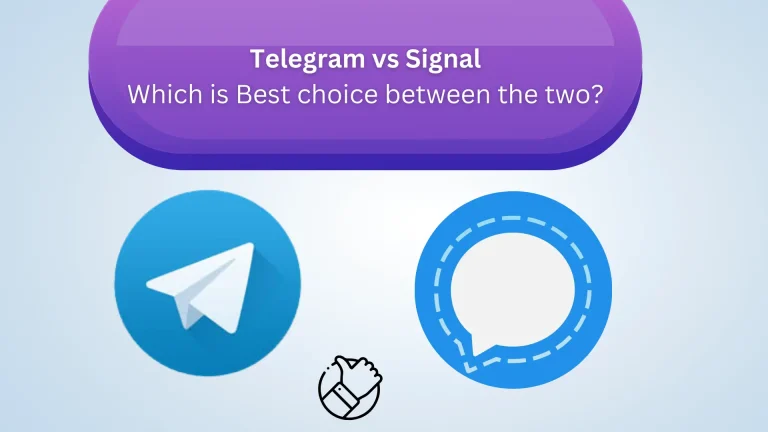Cyberkannadig: Karnataka’s Digital Cultural Revolution
In the bustling tech corridors of Bengaluru and across the digital landscape of Karnataka, a fascinating cultural phenomenon is reshaping how we think about technology, identity, and cultural preservation. The emergence of the Cyberkannadig represents more than just another tech trend – it embodies a revolutionary approach to maintaining cultural roots while embracing digital innovation.
The term Cyberkannadig, derived from the fusion of “cyber” (representing the digital world) and “Kannadig” (a Kannada-speaking person), captures the essence of a movement that refuses to see technology and tradition as opposing forces. Instead, it celebrates their harmonious integration, creating a new paradigm for cultural expression in the digital age.
Understanding the Cyberkannadig Identity
A Cyberkannadig is fundamentally someone who takes immense pride in their Kannada heritage while actively participating in and shaping the digital world. These individuals understand that technology is not merely a tool for progress, but a powerful medium for cultural preservation and promotion. They represent a conscious effort to ensure that as Karnataka races toward a digital future, its cultural soul remains intact and vibrant.
What makes Cyberkannadigs truly unique is their dual expertise – they are equally comfortable navigating complex technological systems and discussing classical Kannada literature. They can develop sophisticated software applications while composing beautiful Kannada poetry. This duality is not a contradiction but a strength that allows them to bring authentic cultural perspectives to technological innovation.
The Cyberkannadig movement emerged organically during the early 2000s, coinciding with the IT boom in Bengaluru. As the city transformed into India’s Silicon Valley, technology became a pivotal part of everyday life. This change wasn’t confined to professional spheres but seeped into the social and cultural fabric, giving birth to a new breed of Kannadigas who embraced the digital world while remaining rooted in their traditional culture.
Digital Preservation of Cultural Heritage
One of the most significant contributions of the Cyberkannadig movement lies in its approach to cultural preservation. In an increasingly globalized world where local languages and traditions face constant threats of marginalization, Cyberkannadigs have found innovative ways to keep their heritage alive and relevant.

Through social media platforms, specialized websites, and digital archives, they create and share content that celebrates Kannada culture in all its forms. This includes everything from traditional recipes and folk tales to contemporary interpretations of classical art forms. By digitizing these cultural elements, they ensure that future generations will have access to their rich heritage, regardless of geographical boundaries.
The movement has sparked the development of digital tools specifically designed for the Kannada-speaking community. From advanced Kannada fonts and keyboards to comprehensive language learning applications and sophisticated translation tools, Cyberkannadigs are creating the technological infrastructure necessary to support their language in the digital age.
Traditional Kannada literature, music, and art have found new platforms and audiences through digital media. Cyberkannadigs leverage blogs, online forums, and multimedia platforms to promote the Kannada language and culture, reaching audiences far beyond Karnataka’s geographical limits. This digital embracement has led to a resurgence of interest in Kannada culture among younger generations, who are now more engaged with their cultural roots than ever before.
Technology as a Cultural Bridge
Perhaps one of the most fascinating aspects of the Cyberkannadig phenomenon is how it uses technology as a bridge between different generations and communities. Older generations, who might otherwise feel disconnected from the digital world, find themselves drawn to online platforms when they discover content in their native language that resonates with their cultural experiences.
Young Cyberkannadigs use technology to explore and rediscover aspects of their heritage that might have been lost or forgotten. Through digital archives, online discussions, and virtual cultural events, they connect with their roots in ways that previous generations could never have imagined. This bridging effect extends beyond generational divides to geographic ones as well, allowing Kannada speakers living in different parts of India or around the world to maintain strong connections to their cultural homeland.
The community fosters a sense of unity and shared identity among Kannada speakers who engage with the digital world through content creation, social media posts, and discussions primarily conducted in Kannada. Language remains central to the Cyberkannadig community’s identity, serving as a key element in preserving and promoting Kannada culture in the digital realm.
Educational Transformation and Digital Literacy
Education represents one of the most important frontiers for the Cyberkannadig movement. Recognizing that digital literacy is essential for future success, many Cyberkannadigs have dedicated themselves to making technology education accessible to Kannada speakers, particularly in rural areas where English-language resources might be less effective.
The movement emphasizes the importance of staying vigilant in the digital space, from raising awareness about common online threats to organizing workshops on safe online practices. The goal is to create a digitally literate and secure community of Kannadigas who can harness the benefits of the digital age without compromising security or succumbing to various risks.
Cyberkannadigs have developed educational content, tutorials, and training programs that teach everything from basic computer skills to advanced programming concepts, all delivered in Kannada. This approach has proven particularly effective in reaching audiences who might otherwise be excluded from the digital revolution due to language barriers.
The movement has also embraced the challenge of making traditional education more engaging through technology. Interactive learning platforms, educational games, and virtual reality experiences that incorporate Kannada language and cultural elements are helping to create more inclusive and effective educational environments.
Economic Impact and Entrepreneurship
The rise of the Cyberkannadig has had a significant impact on Karnataka’s economy, particularly in fostering entrepreneurship. Bengaluru, often touted as India’s startup capital, is home to numerous tech startups founded by Kannadigas who embody the Cyberkannadig spirit. These enterprises are not just contributing to the local economy but are also creating solutions that cater to both local and global needs.

From e-commerce platforms promoting local crafts to applications that help in learning Kannada, these entrepreneurs are blending their technical acumen with a commitment to their roots, setting new trends in the business world. They bring unique value to the startup ecosystem by combining global technological trends with deep local cultural insights.
Cyberkannadigs create products and services that address specific needs of Kannada-speaking communities while maintaining international standards. Their dual understanding of technology and culture helps them identify market opportunities that others might miss and develop solutions that resonate authentically with local users.
Notable entrepreneurs in this space have made waves in the entrepreneurial world, creating movements that change how we think about technology and its role in society. Their impact goes beyond business metrics; they are shaping the future, creating jobs, and fostering a culture of innovation that benefits entire communities.
Challenges and Opportunities
Despite its many successes, the Cyberkannadig movement faces several significant challenges. The digital divide remains a major obstacle, with many rural areas still lacking reliable internet access. This limits the reach of Cyberkannadig initiatives and prevents many potential participants from joining the movement.
Language barriers in the digital space also present ongoing challenges. While progress has been made in developing Kannada-language digital tools and platforms, much of the internet’s infrastructure and content remains dominated by English. Cyberkannadigs must constantly work to create alternatives and ensure that their language remains viable in digital contexts.
Cultural resistance from some quarters also poses challenges. Some traditionalists view the integration of technology and culture with suspicion, while some technology enthusiasts see cultural considerations as obstacles to progress. Cyberkannadigs must navigate these tensions while building bridges between different perspectives.
However, these challenges also represent opportunities for innovation and growth. The need for better digital infrastructure has sparked entrepreneurial initiatives aimed at improving connectivity in underserved areas. Language barriers have motivated the development of more sophisticated translation and localization technologies. Cultural tensions have led to more thoughtful and inclusive approaches to technological development.
The Future of Cyberkannadig
Looking ahead, the future of the Cyberkannadig movement appears bright and promising. With increasing internet penetration and advancing digital technologies in India, more people are set to join the digital revolution. This presents tremendous opportunities for expanding and further evolving the Cyberkannadig identity.

Government initiatives focusing on digital literacy programs, the development of Kannada-based applications and software, and official support for promoting regional languages in the digital space are likely to propel this movement forward. Educational institutions are increasingly integrating technology into their curricula, focusing not just on technological skills but also on the importance of cultural heritage.
The movement represents more than just technology adoption; it’s about empowerment, identity, and community building. As India continues its digital transformation, the Cyberkannadig model offers valuable insights into how technology can be leveraged to strengthen rather than diminish cultural identity.
Frequently Asked Questions
What exactly is a Cyberkannadig?
A Cyberkannadig is a Kannada-speaking individual who actively embraces technology while maintaining strong connections to their cultural heritage. They represent a unique blend of digital expertise and cultural pride, using technology as a tool to preserve, promote, and celebrate Kannada culture. These individuals are equally comfortable navigating complex technological systems and engaging with traditional Kannada literature, art, and customs.
How did the Cyberkannadig movement begin?
The Cyberkannadig movement emerged organically during the early 2000s, coinciding with Bengaluru’s transformation into India’s Silicon Valley. As technology became integral to daily life in Karnataka, a new generation of Kannadigas began using digital platforms to express their cultural identity. The movement grew naturally as tech-savvy individuals recognized the potential of technology to preserve and promote their heritage rather than replace it.
What role does language play in the Cyberkannadig identity?
Language is absolutely central to the Cyberkannadig identity. Kannada serves as the primary medium for cultural expression and community building within the movement. Cyberkannadigs actively create content, develop applications, and engage in online discussions primarily in Kannada. They work to ensure that their native language remains viable and vibrant in digital spaces, often developing tools and platforms specifically designed for Kannada speakers.
How do Cyberkannadigs contribute to cultural preservation?
Cyberkannadigs preserve culture through digital archiving, content creation, and innovative technological solutions. They digitize traditional recipes, folk tales, classical literature, and art forms, making them accessible to future generations. They develop Kannada fonts, keyboards, language learning applications, and translation tools. Through blogs, social media, and multimedia platforms, they create engaging content that keeps Kannada culture relevant and accessible to younger generations.
What challenges does the Cyberkannadig movement face?
The movement faces several significant challenges including the digital divide in rural areas, language barriers in predominantly English-dominated digital spaces, and cultural resistance from both traditionalists and technology purists. Limited internet infrastructure in some regions restricts participation, while the need for more Kannada-language digital tools and platforms remains an ongoing challenge that requires continuous innovation and development.
How do Cyberkannadigs impact education and digital literacy?
Cyberkannadigs play a crucial role in making technology education accessible to Kannada speakers, particularly in rural areas. They develop educational content, tutorials, and training programs delivered in Kannada, helping bridge language barriers that might otherwise exclude people from digital literacy initiatives. They also create interactive learning platforms and educational tools that incorporate Kannada language and cultural elements, making education more inclusive and culturally relevant.
What economic contributions do Cyberkannadigs make?
Cyberkannadigs significantly contribute to Karnataka’s economy through entrepreneurship and innovation. Many tech startups in Bengaluru are founded by entrepreneurs who embody the Cyberkannadig spirit, creating solutions that serve both local and global markets. They develop e-commerce platforms promoting local crafts, language learning applications, and various digital services that address specific needs of Kannada-speaking communities while maintaining international standards.
How do Cyberkannadigs bridge generational gaps?
Technology serves as a powerful bridge between different generations within the Cyberkannadig community. Older generations connect with digital platforms when they find content in their native language that resonates with their cultural experiences. Young Cyberkannadigs use technology to rediscover forgotten aspects of their heritage through digital archives and virtual cultural events, creating meaningful connections across age groups and fostering intergenerational dialogue.
What does the future hold for the Cyberkannadig movement?
The future looks promising with increasing internet penetration and advancing digital technologies in India. Government initiatives supporting digital literacy and regional language promotion are expected to accelerate the movement’s growth. Educational institutions are integrating technology while emphasizing cultural heritage, and there’s growing recognition that the Cyberkannadig model offers valuable insights for balancing technological advancement with cultural preservation.
How can someone become part of the Cyberkannadig community?
Becoming a Cyberkannadig involves embracing both technology and Kannada culture with equal enthusiasm. This can start with creating or consuming digital content in Kannada, participating in online cultural discussions, supporting Kannada-language digital initiatives, or developing technological solutions that serve the Kannada-speaking community. The key is maintaining pride in one’s cultural heritage while actively engaging with and contributing to the digital world in meaningful ways.
Conclusion
The Cyberkannadig phenomenon represents a remarkable synthesis of tradition and innovation, demonstrating that technological advancement and cultural preservation are not mutually exclusive goals. These digital pioneers are creating a new paradigm where technology serves as a vehicle for cultural expression and preservation rather than a threat to traditional values.
As we move forward in an increasingly digital world, the Cyberkannadig movement offers valuable lessons about the importance of maintaining cultural identity while embracing technological progress. It shows us that the future belongs not to those who abandon their roots in pursuit of modernity, but to those who find creative ways to honor their heritage while shaping the digital landscape.
The story of Cyberkannadig is still being written, with each new generation of tech-savvy Kannadigas adding their own chapters to this ongoing narrative of cultural resilience and technological innovation. In their hands, the future of Karnataka’s digital identity looks not just promising, but authentically rooted in the rich soil of Kannada culture while reaching toward the limitless possibilities of the digital frontier.
You May Also Like :






